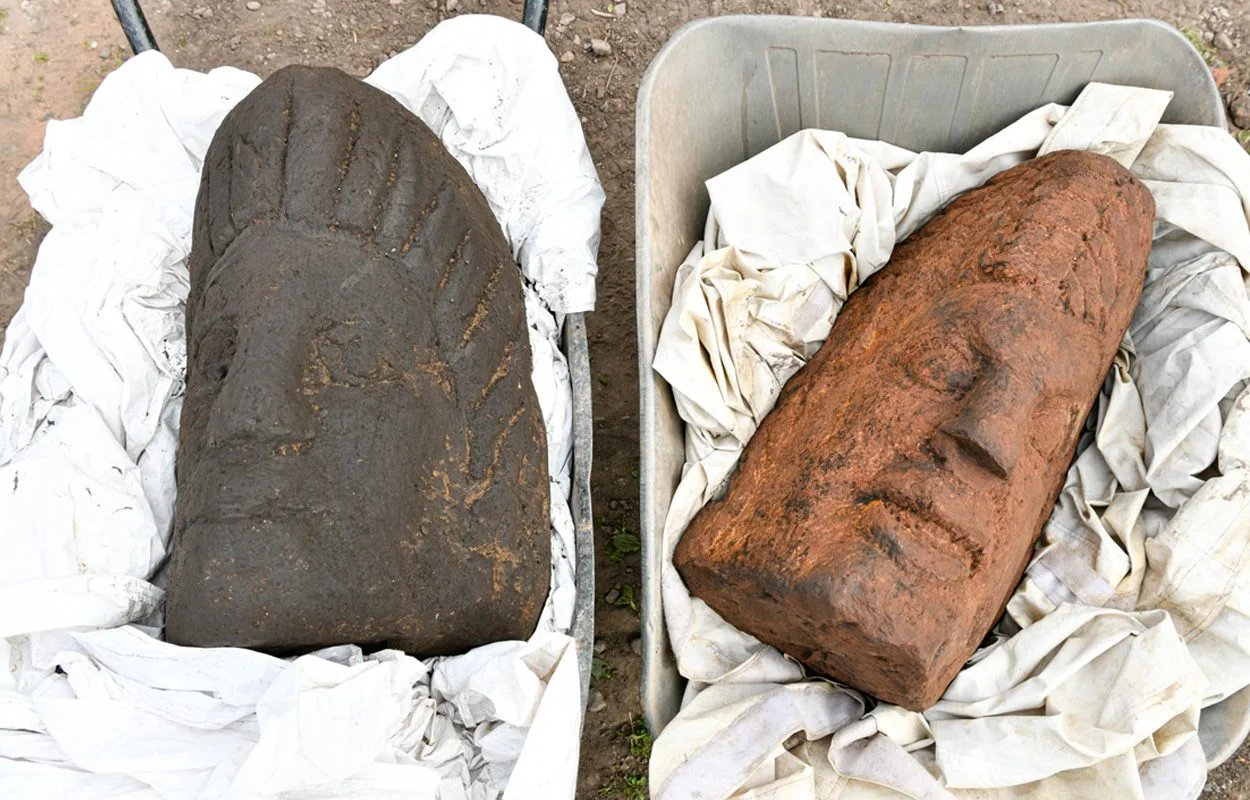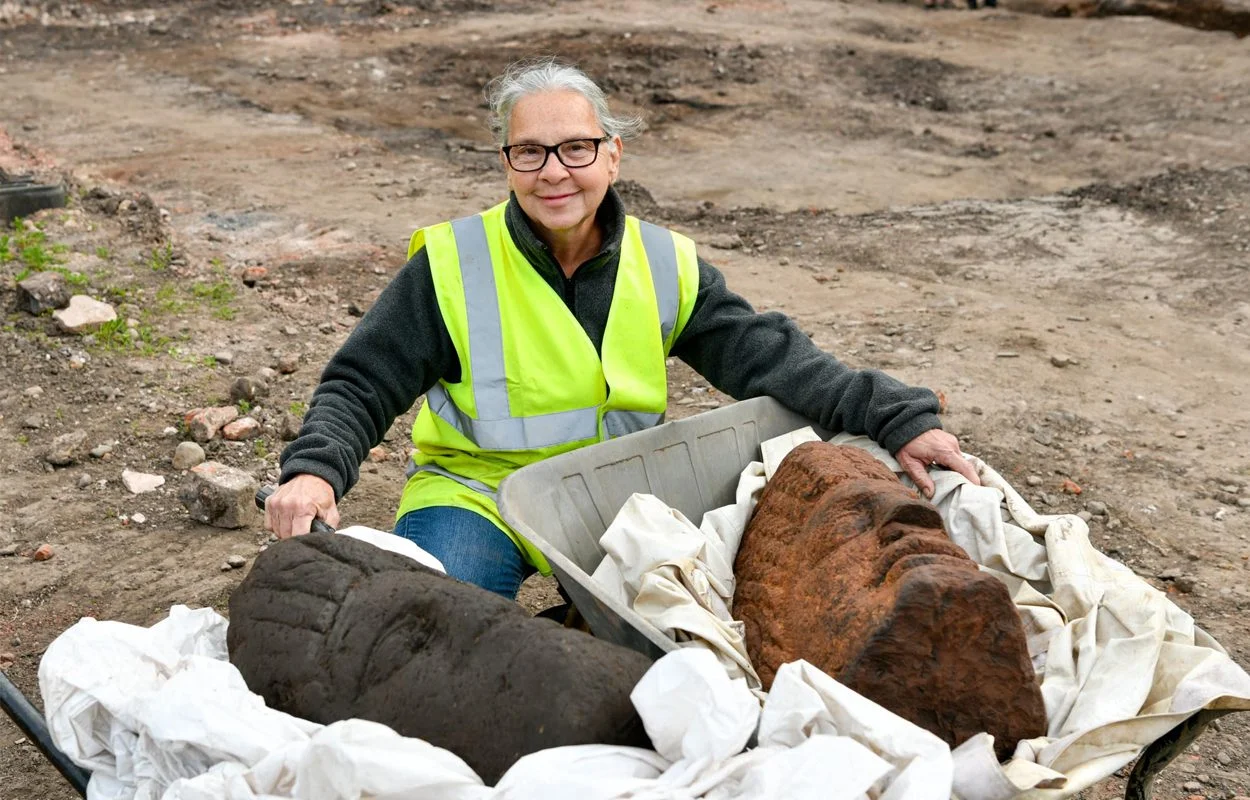Archaeologists conducting excavations at a Roman bathhouse in Carlisle, England, have uncovered two colossal carved heads near Hadrian’s Wall.
The Uncovering Roman Carlisle project has been conducting a community supported excavation at the Carlisle Cricket Club, where the team have been excavating the Roman bath house after its initial discovery in 2017 by archaeologists from Wardell Armstrong.
The bath house is located near the Roman fort of Uxelodunum (meaning “high fort”), also known as Petriana, in the Carlisle district of Stanwix.
Uxelodunum was constructed to control the territories west of present-day Carlisle and an important crossing on the River Eden. It was located behind the Hadrianic barrier, with the Wall forming its northern defences and its long axis parallel to the Wall. The fort was garrisoned by the Ala Petriana, a 1,000-strong cavalry unit, whose members were all granted Roman citizenship for valour on the field.

Previous excavations of the bath house have revealed several rooms, a hypocaust system, terracotta water pipes, intact floors, painted tiles, fragments of cooking pots, and engraved gems known as intaglios from the late 2nd century or 3rd century AD.
During the latest community led excavations, archaeologists have found two colossal sandstone carved heads (3x the size of a human head) which would have come from sculptures measuring up to 12-15 ft (3.5-4.5m) tall. The carved heads date from around the 2nd century AD which the team believe may depict Roman gods.

Cumberland Council’s portfolio holder for Vibrant and Healthy Places, Cllr Anne Quilter, said: “This is exciting news and is a real coup so early into the dig. It is a significant find and it is great to hear that they were unearthed by volunteers. Carlisle has a rich Roman history, and this further strengthens the city’s connection to that era. I can’t wait to see what else is found!”
Excavations have also uncovered several tiles stamped with the official Roman Imperial stamp. The IMP stands for Imperator, Latin for Emperor. A stamp such as this indicates a tilery and brick makers who had official imperial approval.
Header Image Credit : Stuart Walker Photography





